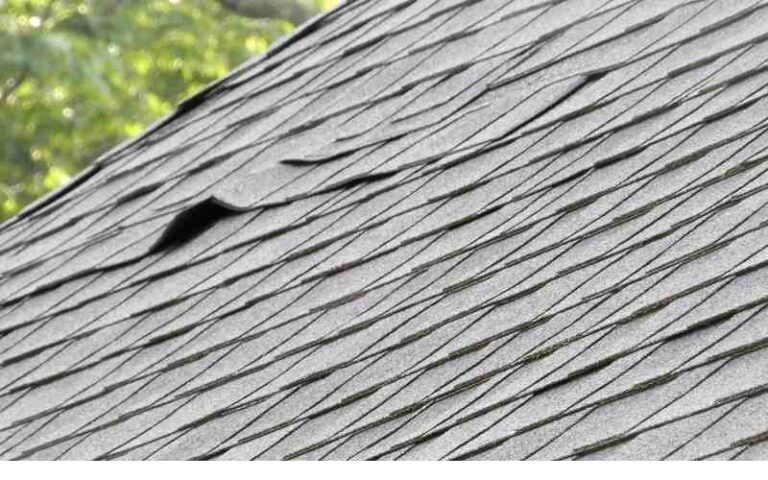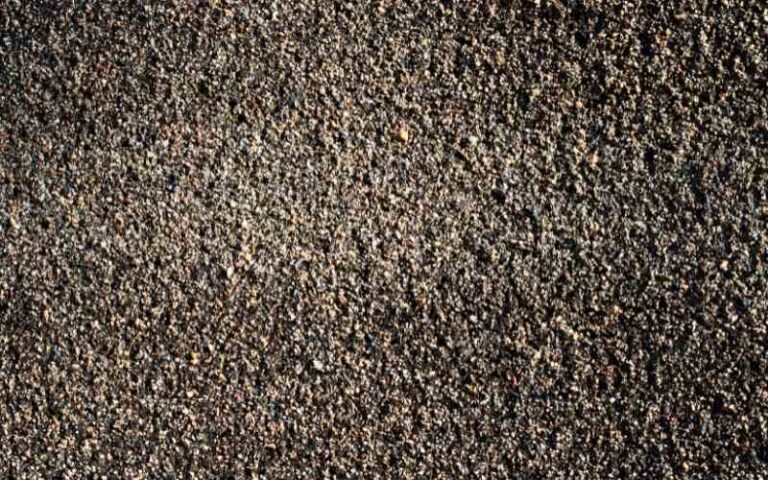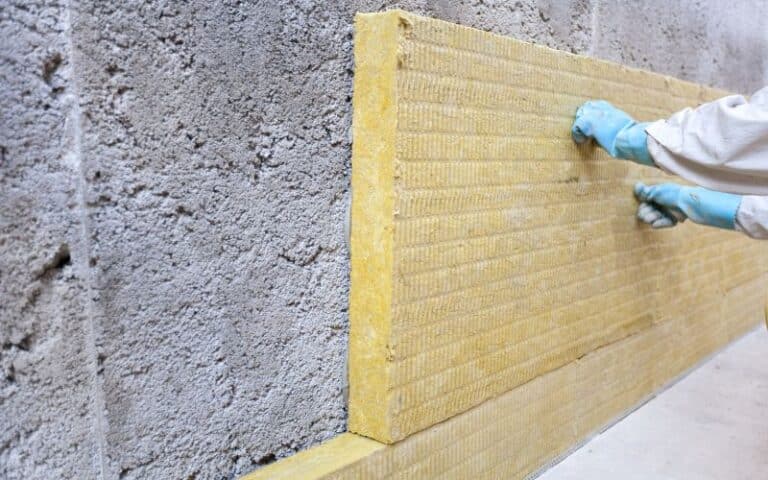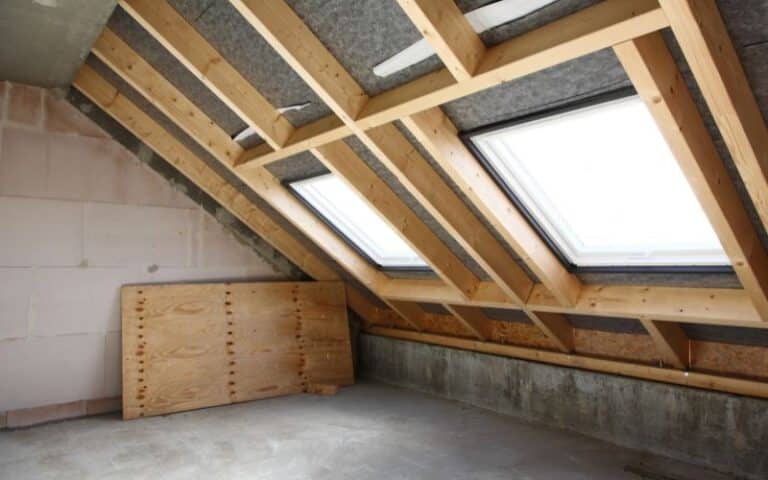When constructing a shed, one key thing to consider is the type of material you’re using because they’ll determine how stable and sturdy your shed will be.
You can use different materials like wooden rafters or metal to build your shed, but with each material comes a different result.
Your shed can stand firm against external forces or fall off, depending on your material. However, you can only know which material is best when considering its strengths.
Yes, you can use metal studs to build a shed. Metal Studs have proven to support both loaded and unloaded walls and outlast some wooden structures since they’re not susceptible to damage from termites and other insects that affect wood. You should also consider your needs when using metal studs for a shed.
Ready for a Roofing Quiz?
Can You Use Metal Studs Instead of Wood For Building a Shed?
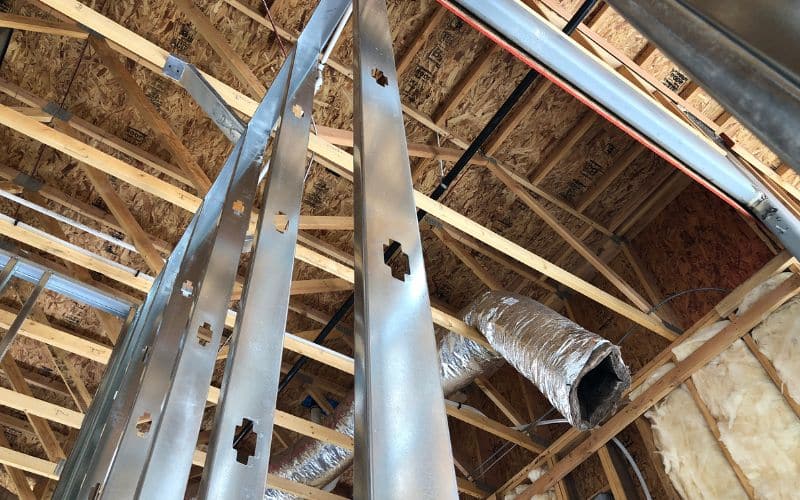
You can use metal studs in place of wood for constructing your shed, and not just your shed, but metal studs fit perfectly into any form of structural construction.
Because it provides the same support wood does and sometimes serves longer than wooden rafters would.
Metal studs are ideal for people building a permanent structure because they can neither wear, decay or be eaten by termites.
In many homes, people opt for metal studs instead of wood because metal studs are more reliable when supporting loaded walls.
In addition, they can carry the weight of the roof without cracking or breaking. Once you weld them properly, you have solved the issue of them breaking down.
However, some major factors exist when considering which materials to use between met studs and wood.
Comparing both materials will give you a better understanding of how each can serve you.
| Wood | Metal Studs |
|---|---|
| It is cheap and easy to work with because of its flexibility. | They’re durable and can withstand external pressure. |
| Wood can be easily sourced from local markets. | They cannot be damaged by termites or mold. |
| They’re easier to replace in the case of faulty construction. | They’re considered safe because they don’t release VCOS. |
Metal Studs Vs. Wood; Factors to Consider
Be it a shed or a garage, knowing the reason for building the structure will help you know if you will need it for a long or short time.
Using it for a short time will save costs by choosing temporary materials since they mostly cost less than permanent ones.
In this case, metal studs are considerably more long-lasting than wood. Although not all types of wood damage easily, metal studs are more likely to withstand most factors that affect wood.
Metal Studs can be affected by rust, and in a case where the load is much, they can sag, but apart from these, they’re very durable.
The size of your structure is also a key factor to consider because a large structure will need a large roof.
And the size of the roof often affects the entire structure if it is not made with strong materials.
For example, thin wood cannot suspend a heavy roof and will be a disadvantage if you use it on a permanent structure. In this case, using metal studs will serve you better.
How Do You Build a Metal Stud Structure?
The cost of purchasing a shed or hiring a building Engineer is over the roof; many people have resorted to building the sheds themselves.
You can also do the same to save cost. First, you must plan how your shed will turn out, the type of roof you’d like to build, the materials you will use, and the project’s costs.
Planning your expenditures will make it easier for you to spend within your budget since the aim of building a shed by yourself instead of hiring professionals is to reduce costs.
To erect a metal stud shed successfully, you’ll need the following tools to make it easier for yourself and anyone else who might be helping with it.
- Measuring tape
- Pencils
- A balanced ladder
- Pliers
- Screwdrivers
- Screws
- Drill
- Protective wears like gloves, glasses, and a helmet
- Square
- Washers
Once you’ve had everything checked, the next step is to begin construction in the following steps;
#1. Step 1: Choose the Type of Metal to Use
Most sheds are either made of Aluminum or steel for different reasons. Aluminum is lighter and more flexible but can barely withstand heavy storms or wind as much as steel.
On the other hand, steel is more expensive but will give a studier shed.
#2. Step 2: Secure the Base of Your Shed
A concrete slab base is the best for sheds. It provides some form of balance to the metal frame. Ensure that the level concrete slab is free of ridges and potholes.
#3. Step 3: Construct the Base Frame
Using pieces of metal studs, construct a metallic base and secure it to the concrete slab base using the drill and screws.
After you’re done with the base frame, using your measuring tape and pencil, mark out the points where the wall frames will go and drill holes in the points in order not to forget.
#4. Step 4: Affix the Door Frame Before Moving It onto the Walls
It will help you get the proper measurements for your walls and doors. Installing the walls first can make your door frame wider or smaller than the required space.
#5. Step 5: Construct Your Walls
Once the door is in place, start building the walls of your shed. You already know which parts go to the walls and which go to the roof.
All the studs have a label of where they’re supposed to fit. Choose the studs meant for the walls and screw them into the holes you marked out earlier using screws and washers.
Next, add the walls to the frame after securing it with screws. Do this on all the walls around the shed.
#6. Step 6: Construct the Roof Frame
The next thing to do after building the walls is to construct a roof frame to hold the roof panels.
Screw the parts meant for the roof’s frame using screws and washers. After which, you’ll affix the frame with the roofing sheet of your choice.
#7. Step 7: Fix the Door
Once your shed is complete, the next thing is to fix the door into the door frame. Assemble the door part by part and screw it into the shed’s frame.
Are Metal Studs As Strong As Wood?
It is logical to expect that metal studs are not just as strong as wood but stronger and more durable.
You can indeed use wood to build very strong and long-lasting structures, but it is still wood, and when it comes to the strength of materials, metal studs are stronger than wood.
This is why many people who intend to erect permanent structures use metal instead of wood because, in the long run, the building will be exposed to a series of natural forces like wind, storms, and heavy rainfall.
Wood has advantages when you need it to serve; it is cheaper, readily available, and easy to work with.
It will be easier for you to replace a broken slat on a wooden frame than to reconstruct a broken metal frame.
This feature makes it preferable to metal, but wood cannot carry the weight a metal frame carries; even if it doesn’t break down immediately, it’ll gradually sag and fold up one day.
On the other hand, metal is not flexible and can handle a reasonable amount of weight depending on the metal you use.
Can Metal Studs Be Exposed to Weather Conditions?
Many prefer metal studs to wood because they can withstand extreme weather conditions for longer.
However, due to how lightweight wood is, there’s a limit to the force it can withstand.
Therefore, it may stand still during the heat and break down during rainy seasons and vice versa. But, at the same time, metal studs remain sturdy season in and season out.
What mostly affects metal studs is moisture. It will rust or corrode with constant moisture exposure without any heat source to dry it out.
But this rust is usually gradual and will not affect the overall structure immediately until after some time of constant corrosion.
Furthermore, metal is very conducive to heat and cold, which could easily affect wood.
How Much Weight Can Metal Studs Hold?
Weight limits for metal studs vary for different structures because of the different materials used.
For example, a 7-foot steel metal stud will support the same weight as a 10-foot Aluminum metal stud because steel has more tensile strength than Aluminum.
Other factors determining the load weight limit for metal studs include the studs’ length, spacing, thickness, and width.
Even for the same material and size but with different spacing and thickness, two separate metal studs will support different weights for different periods.
In many cases, manufacturers give a guide for the required spacing of different heights. This chart makes it easy to determine the load limit for different structure sizes.
Conclusion
Using Metal Studs to construct a shed has been a common practice recently because of economic and weather factors.
Inflation in building materials has pushed many people into building stable structures for different purposes.
Metal studs are ideal if you’re planning to build a permanent structure such as a garage or a shed.

